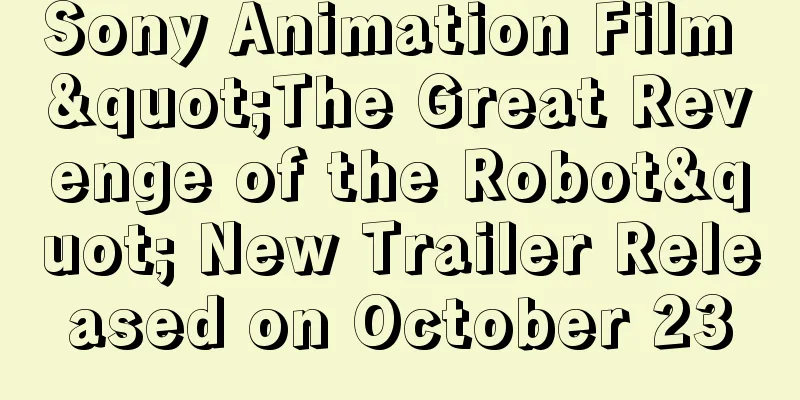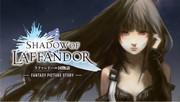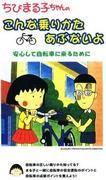"The Bat": What is the appeal of this unique anime that depicts a fascinating dance of darkness and light?

"The Bat": An animated version of Aesop's fable and its deep insights■ Public Mediatheater ■ Original MediaAnime Original ■ Release dateJuly 1958 ■Distribution companyNCC Distribution ■Frequencies10 min ■ Number of EpisodesEpisode 1 ■ DirectorTakeo Ueno ■ ProductionNakai Production ■ StoryA baby bat goes to the forest to play, but no animals pay him any attention. On the way back from his cave home, crying, he tells his grandfather the reason. Once upon a time, there was a long drought, and the animals and birds in the forest were short of water, so they decided to build a dam upstream to store drinking water. The animals carried heavy stones, and the birds carried tree branches. But the bats just took naps. When a squirrel came and asked to help with the work, the bat lied, saying that he had wings and worked with the birds. When the dam was completed, a baseball game was held between the animals and the birds to celebrate, and when the animal team was ahead, the bats cheered for the animal team, and when the bird team was about to win, they went to cheer for the bird team. Then a monster appeared. The birds and animals united and fought against it. The bat quickly escaped into the cave. The monster fled in fear, and everyone held a big celebration, saying that they had won through the power of unity. The bats, who had been watching this, came out of the cave and started dancing with everyone, but when the rabbit asked if the bats had ever cooperated with them, everyone criticized them for being sneaky. One by one, the bats sneaked back to their cave, and from then on, they were hated by everyone and had to live in the dark cave, and so the old man's story ended. Source: History of Japanese Animation Films, p. 254 ■ExplanationAnimated version of Aesop. ■ Main staff・Adaptation by Nakai Kinbei ・Animation by Higashi Kisaburo, Iyama Tadayuki, Tanaka Kazuo, Tsuruoka Hiroyasu (Tsuruoka Hirohide's History of Japanese Animation Films p.254), Oshida Morito, Miyajima Eisaku, Takamatsu Jiro, Ishiyama Yumi, Shimizu Takashi, ■Detailed evaluation and analysis■ Background and creative intent of the work"The Bat" is a short animated film released in 1958, directed by Ueno Takeo and produced by Nakai Productions. The film is based on Aesop's fable and depicts animals working together and the actions of bats in the process. The intention behind the film is thought to be to emphasize the importance of community and individual responsibility. In particular, reflecting the historical context of post-war Japan's period of reconstruction, the film contains a message that appeals to the value of unity and cooperation. ■Story development and themeThe story begins with a baby bat playing in the forest, only to be faced with the reality that the other animals ignore him. This scene could be seen as a symbol of individuals being isolated within society. Through the grandfather's old stories, the bat's laziness in building the dam and his double-dealing at the baseball game are revealed. These episodes depict the impact that individual actions have on the community, with particular themes of "cunning" and a lack of "responsibility" emerging. In the scene where the monster appears, the animals are shown banding together to fight it, emphasizing the power of solidarity. However, when the bat escapes into the cave, it shows how individual actions can contribute to the loss of trust in the community. In the end, the scene where the bat is blamed by everyone emphasizes the impact that individual actions can have on a community. This theme is a very important message even in modern society, and gives the viewer deep insight. ■ Animation techniques and expressions"The Bat" was produced using the animation techniques of the 1950s. In particular, the background art was created by famous artists such as Kanzan Araki, Sotaro Tamura, and Tatsuoki Nanbata, and the depictions of the forest scenery and caves are realistic. In addition, talented animators such as Kisaburo Azuma, Tadayuki Iyama, Kazuo Tanaka, Hiroyasu Tsuruoka, Morito Oshida, Eisaku Miyajima, Jiro Takamatsu, Yumi Ishiyama, and Takashi Shimizu participated in the animation staff, and the movements and expressions of the animals were depicted in great detail. Musically, Hiroshi Yoshizawa arranged and conducted the music, effectively using dramatic music that matches the development of the story. Recorded at Aoi Studio, the sound effects also help to enhance the atmosphere of the story. The combination of these technical elements has resulted in a work that is visually and aurally rich. ■Character AnalysisThe main character, the bat, is portrayed as lazy and cunning, but at the same time, he is portrayed as feeling lonely and alienated. This character can be seen as a symbol of an individual who is isolated in society, and he evokes sympathy from the viewer. Meanwhile, the other animals are portrayed as symbols of unity and cooperation, especially the squirrel and the rabbit. The squirrel encourages the bat to help with work, while the rabbit points out the bat's cunning. Through these characters, the importance of the community and individual responsibility are emphasized. ■ Social significance and message for the modern age"The Bat" emphasizes the importance of community and individual responsibility, a message that is still very important in today's society. In particular, its message of the value of unity and cooperation should be reevaluated in today's society, where diversity and division are increasing. It also gives viewers deep insight by depicting the impact that individual actions have on the community. These messages are also very valuable from an educational point of view, and can be used as material to teach children the importance of community. ■ Recommendations and ratings■Recommendation Eligibility"The Bat" is highly recommended for viewers who want to learn about the importance of community and individual responsibility. It is particularly useful for children and educators as a way to teach the value of solidarity and cooperation. It is also a good opportunity for viewers who are interested in animation and music to learn about the animation techniques of the 1950s. ■Evaluation"The Bat" is worthy of high praise in all respects, including story, theme, animation technique, and music. In particular, the theme of the importance of community and individual responsibility is a very important message in modern society, providing viewers with deep insight. In addition, the use of 1950s animation techniques creates a work that is rich in both visual and auditory senses. The combination of these elements makes "The Bat" a work of eternal value. ■ Related information and supplements■ Related worksOther animated works based on Aesop's fables, like "The Bat," include "The Tortoise and the Hare" and "The Fox and the Grapes." These works also depict the importance of community and individual responsibility, which are themes shared with "The Bat." In addition, animated works from the 1950s, such as "Momotaro" and "Urashima Taro," are also useful references for viewers who are interested in animation techniques and music. ■ What happened to the production staff afterwardsUeno Takeo, the director of "The Bat", went on to work on many other films, particularly animation works in the 1960s. Nakai Productions, which was in charge of production, produced many television animation works from the 1960s to the 1970s, contributing to the development of Japanese television animation culture. Many of the main staff members also continued to work in the animation industry, producing many masterpieces. ■How to watch"The Bat" is now available on DVD and Blu-ray, and can also be viewed online through streaming services. In particular, educators and children can benefit from the opportunity to watch it in schools and libraries, as it teaches the importance of community and individual responsibility. Conclusion"The Bat" is a work that deserves high praise in all respects, including its theme of the importance of community and individual responsibility, its 1950s animation techniques, and its music. In particular, this work conveys a very important message even in modern society, and can be said to be a work of eternal value that gives viewers deep insight. I would like to recommend this work to many viewers, providing them with an opportunity to learn about the importance of community and individual responsibility. |
<<: The appeal and evaluation of "Kikimimizukin": A moving story and the depth of its characters
>>: "Urashima Taro" review: What is the appeal of a classic revived in modern times?
Recommend
The Walking Dead Season 10 trailer released, broadcast starts on October 7th, Beijing time
At the ongoing SDCC, AMC released the trailer for...
New trailer for Top Gun 2: Maverick will be released in June 2020
Paramount Pictures’ official Weibo account just r...
Live-action prequel film "Onmyoji 0" confirmed to be introduced to the mainland
The live-action prequel film "Onmyoji 0"...
The spooky horror exorcist adventure "It's Dark Outside the Triangle Window" is confirmed to be made into a live-action movie
"It's Dark Outside the Triangular Window...
Joel appears in the new set photo of the TV series "The Last of Us"
Recently, the HBO TV series version of "The ...
Lady Gaga sheds tears on the set of the film "Gucci Family"
Recently, Lady Gaga announced on social media tha...
The appeal and reviews of "Ghost in the Shell SAC SOLID STATE SOCIETY 3D": The culmination of the "STAND ALONE COMPLEX" series
The appeal and evaluation of "Ghost in the S...
Netflix's "Resident Evil" series will be aired on July 14th, new poster released
The broadcast date of Netflix's live-action v...
Sukeban Deka: Birth of the Girlfriend: A thorough review of the appeal of the new heroine and the depth of the story
A comprehensive review and recommendation of Suke...
Black Widow Will Be More Realistic Than Other Marvel Movies
Today’s Marvel movies have their own unique story...
Jennifer Lawrence may play the Invisible Woman in the reboot of Fantastic Four
According to the Australian media Daily Telegraph...
Good morning, good afternoon, good night, good night. The movie promotion song "Good Night, Good Night" of "The Legend of Luo Xiaohei" is released.
Today (August 9), the animated film "Luo Xia...
Tencent's "Jin Yong's Martial Arts World" trailer: Gao Weiguang plays Ouyang Feng and Bao Shangen plays Huang Rong
Recently, Tencent TV officially released the prev...
The trailer for the movie "Oppenheimer" leaked and it will be released on July 21 next year
Recently, the first poster of Nolan's new fil...
More More: Appreciating the fusion of animation and live action
"More More": The appeal of the short an...









